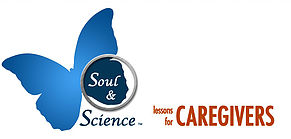Michael Kearney: Being with Pain

Being with Pain Five-Part Series
Michael Kearney, a palliative care physician whose day job is alleviating the pain and suffering of others, tells us that how we live with our own pain matters. Unattended suffering affects our quality of living and our capacity to find healing for ourselves, for others, and for our world. By sharing his personal and professional story, Kearney tells of how he discovered a new way of being with pain, inspired by his experiences with Native American spirituality. By remembering our deep interconnectedness with nature, and practicing openness to our own pain, we can awaken compassion for ourselves and others and enrich our lives with meaning and vitality.
Click here to subscribe to Soul & Science and access Michael Kearney’s full Series.
Self-Assessment Questions:
1. “Choosing an attitude of receptivity, choosing to open our hearts wide, and to keep them open, even in the face of suffering is a courageous and powerful way of meeting the world.” – Michael Kearney, The Nest in the Stream
In your experience, how does receptivity lead to “a courageous and powerful way of meeting the world”? How can you increase receptivity and open your heart wide?
2. “When we allow ourselves to unconditionally love a painful emotion until it is gone, we are rewarded with reclaimed strength and positive energy. By turning to face what we could not face in the past, we can use our once stagnant emotional energy to strongly move our life forward in fresh creative ways.”- Shelley Klammer, MTC, RCS
Michael Kearney states “Pain is energy”. How have you seen painful emotions deplete personal energy, either in yourself or in others? How have you seen “stagnant emotional energy” transform into strength and creative expression?
Best Practices:
1. Ask: “What does being with pain mean?” – Soul & Science Lesson
Take ten minutes and journal about what is currently causing you pain. Examine how it is manifesting physically, emotionally, and spiritually. As you reflect on these issues, don’t think about how to “fix” the pain. Imagine these painful problems as house guests visiting your life. They probably won’t stay forever but will leave at the right time and leave gifts behind.
2. Ask: “How do I relate to nature?” – Soul & Science Lesson
Find a sit-spot outside and reflect on how you relate to nature. Is it a close relationship? Is it simply something pleasantly observed through a window? Is it a source of frustration? A source of joy? Determine if this nature-relationship is something you would like to grow and how to accomplish that goal.
3. “In a study conducted by graduate student Gregory Bratman of Stanford University, brain activity was tracked in volunteers as they took walks in urban and natural areas. Those who walked along the busy urban walkways had increased blood flow to their subgenual prefrontal cortex—a part of the brain associated with negative brooding. But those who walked in the quieter, greener areas had less blood flow to this area of the brain decreased—participants were happier.” – (“How Nature Can Heal Our Wounds”)
For a minimum of two weeks take a walk in a quiet, green space on a regular basis. Note your mood and stress levels. How does it shift and change in the course of your walk?
Additional Resources:
